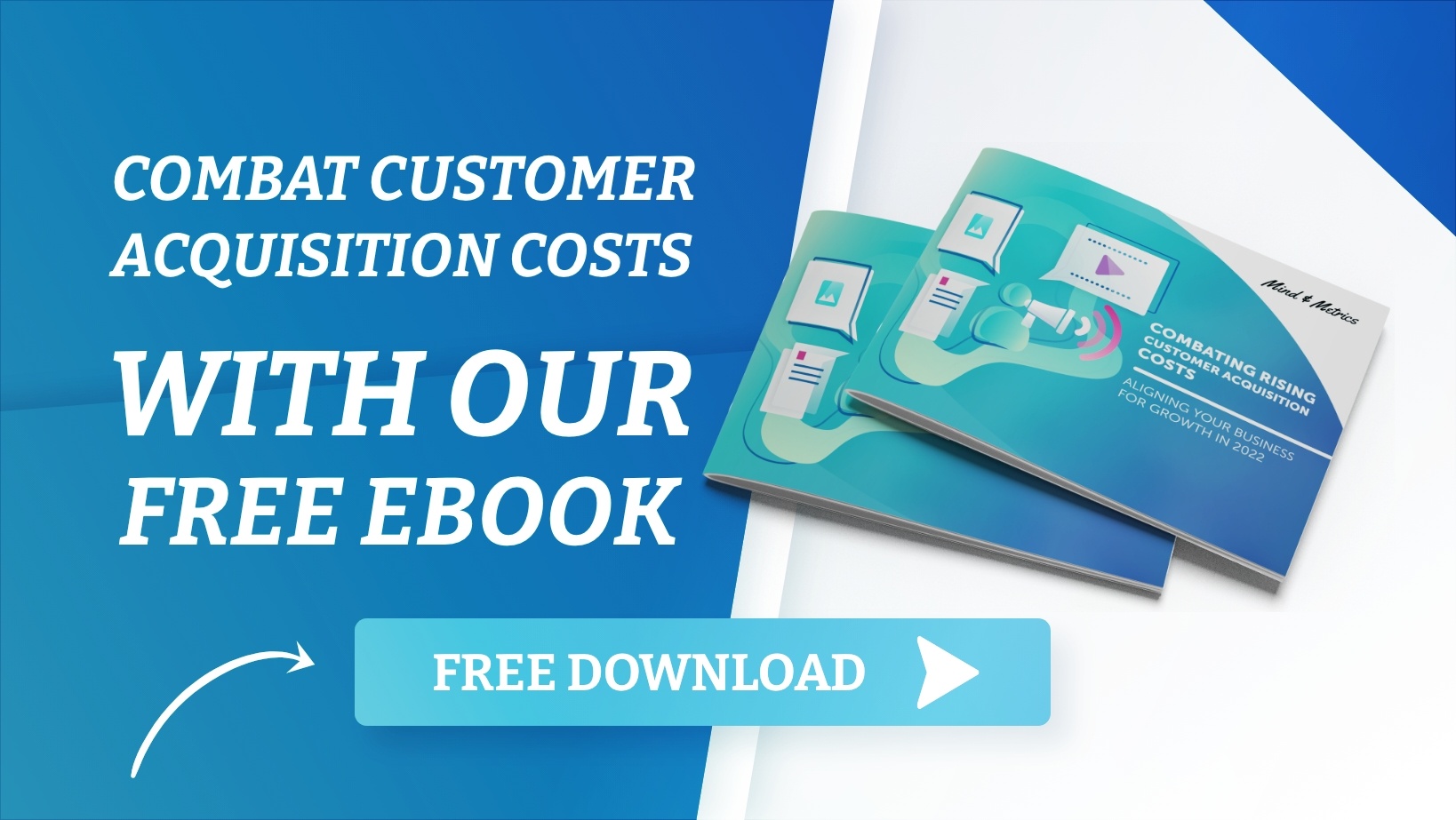Experience firsthand how Mind & Metrics + Supered.io can help your business streamline execution, eliminate unnecessary back-and-forth, and ensure AI accelerates growth—without the chaos.
Identifying Data Gaps in The Customer Experience
No matter what your company sells, it’s a safe bet to assume that you want to remove any barriers that stand between your customers and their desire to make a purchase. And in order to do that, you need to be fully aware of every step in your customer’s buyer’s journey, from them discovering your company to finalizing their purchase. What makes people drop out of the buying process? What do leads get stuck on?
Many companies are aware of the need to track the buyer’s journey, and make an effort to do so. But once a lead becomes a customer, that’s where the monitoring stops - and this is a major flaw in many strategies. Because the customer experience doesn’t end once a purchase is made. You also need to understand the impressions your customers form after using your product or service, and whether they stay loyal to your company or feel compelled to switch to someone else.
Following up with customers post-purchase and tracking your customer retention is just as vital for your success as tracking the buyer’s journey pre-purchase. However, putting systems in place to monitor the entire customer experience is easier said than done. Many companies struggle to find tech solutions that store and integrate data from the entire customer journey. Instead, they often end up needing to cobble together multiple programs that each address different parts of the customer journey, such as one for sales and another for customer service interactions. This tends to create “data gaps”.
Data gaps form when data that is critical to analyzing the customer journey gets trapped in silos between and throughout departments, and becomes inaccessible to the organization’s overall metrics. This leads to missed opportunities for creating an exceptional customer experience, as well as an inability to properly apply attribution models and understand ROI.
To create a frictionless customer experience and have a full, up-to-date picture of your company’s performance, you need to store all your data related to your customer journey in one place and have the tools necessary to analyze it.
A Full-Flywheel Approach
In today’s digital age, it’s more cost effective to retain a customer than to try and acquire a new one. Though costs vary from industry to industry, research has shown it may cost up to 5 times more to acquire a new customer than to retain a current one.
It’s always been cheaper to retain customers than it is to acquire new ones, but in recent years many companies have found that their overall customer acquisition costs have increased. This has led to a reevaluation of the dominant strategies companies use to attract net new customers. One notable change has been the development of a revamped sales funnel: the flywheel model.
The flywheel explains the growth momentum a company gains when it delivers an exceptional customer experience and creates repeat customers. Unlike the sales funnel, the flywheel factors in the need to implement strategies that keep customers coming back after their initial purchase.
To be able to measure your company’s progress accurately, you need to consolidate data from every step of the flywheel - from how you attract your leads to the customer support services you put in place to address issues post-purchase. Following up with customers after they make a purchase has not been prioritized as an important aspect of maintaining a steady stream of sales. Because once a customer makes a purchase, then the buyer’s journey is over and there’s nothing else to monitor, right?
Well, not so much. The buyer’s journey doesn’t end with a purchase. To retain your customers, they need to feel cared for after they make a purchase too, not just while they’re being sold to. A recent survey of more than 2,000 consumers found that 86% of consumers will leave a brand they were once loyal to after just two or three negative customer service experiences. Failing to track how your customers are responding to your customer service team, and neglecting any feedback they have after purchasing your product or service, will cost your company big time.
A full-flywheel approach means implementing processes to track customer interactions throughout every step of the customer journey, including their post purchase journey, and ensuring every team involved in the customer experience has access to the same data.
Data Gaps and Measuring ROI
One of the most important metrics you can use to measure your business’s success is your customer acquisition cost vs. your customer lifetime value. If your acquisition costs are higher than the value your customers produce, you’re operating at a loss.
Customer acquisition costs are calculated by adding together the cost of resources - marketing costs, salaries, sales expenses, cost of software or other digital tools - invested in finding and retaining customers, then dividing that number by the number of new customers these resources have generated over a certain period of time. This all sounds fairly straightforward, but accurate metrics require all applicable data.
If gaps in your data are preventing you from being able to factor in all the resources involved in customer acquisition and customer retention, you may continue to waste money and time on ineffective strategies and not even realize it.
Data Integration is Key to Capturing The Full Customer Journey and Understanding ROI
Here’s an example of a data gap we encountered with one of our own clients. The nature of their services requires them to obtain and store sensitive information about their customers. They have a proprietary database that keeps all their client information together, from names to social security numbers.
To utilize HubSpot’s marketing automation to create lead nurture campaigns, this company required certain customer and lead data - such as email addresses - to be stored in HubSpot. But the most sensitive client information (i.e. social security numbers) had to remain stored in their proprietary database to mitigate security risks. This created the need to manually input client names, lead status, and email addresses into HubSpot.
Manually inputting client data is certainly not the most efficient way to get client information where it needs to be, and can create issues with repeated or missing data. It also makes it much harder to track which marketing campaigns and methods lead to stronger customer retention. When data is stored across multiple separate, unconnected databases, some of it tends to get lost in translation, leading to bad timing of messaging during their customer journey and difficulty measuring true ROI.
Closing this type of data gap doesn’t have to mean consolidating all the data into one place. The solution lies in building an integration, so that certain data and engagement analytics will be automatically and seamlessly transported from one database to the other, without putting the more sensitive data at risk. This way, the necessary information is accessible all the time, to everyone.
Storing and analyzing customer data from every step of the flywheel is vital for aligning your teams, maintaining reliable customer engagement metrics, and improving the overall customer experience. Architecting a well-integrated system for full-flywheel data acquisition is no simple feat, and it can help to work with someone who specializes in digital transformation to aid you in the development process.
Digital transformation is about more than just adopting new technologies; it involves incorporating technology into every aspect of a business, resulting in a fundamental shift in your business’s processes. A digital transformation expert will understand the types of technology solutions that will work best for your business’s specific needs, and will help you work out a way to streamline your processes using technology.
Are You Able to Measure Your Customer Acquisition Costs?
With the right toolkit to bridge data gaps, you can create more personalized interactions with your customers and hyper-relevant content that will attract your ideal buyers.
Today’s customer has high standards for what content they will spend their time engaging with. This along with rising advertising costs and increased competition across the digital landscape has led to an increase in the amount of money companies need to invest in customer acquisition.
How do you calculate your customer acquisition costs accurately, and increase the momentum of your lead generation tactics without spending more? Check out our free new eBook, Combating Rising Customer Acquisition Costs, to learn how to minimize costs and maximize ROI. Click the button below to download for free.

